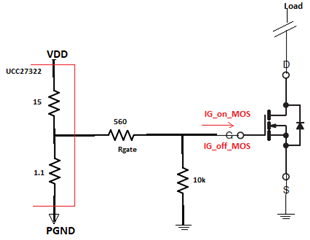Other Parts Discussed in Thread: UCC27614, UCC27624, CSD19535KTT
Hi,
UCC27322 is used to drive MOSFET IRFP22N50A. I am interested to calculate min-max gate current required to turn on and turn off the MOSFET.
Below is the circuit under consideration. Load current is 4A.

Do these resistor values need to be considered while calculating the on/ off gate current?
![]()
Please confirm the gate current.
Also, how would the driver behave in case of overvoltage?


